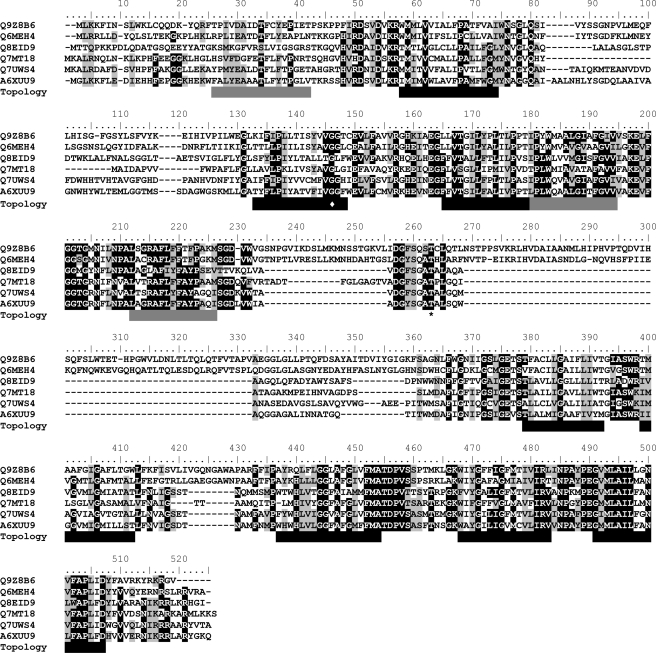FIGURE 9.
Sequence alignment of NqrB. Sequences of NqrB from Chlamydia pneumoniae (Q9Z8B6), Protochlamydia amoebophila (Q6MEH4), Shewanella oneidensis (Q8EID9), Porphyromonas gingivalis (Q7MT18), Rhodopirellula baltica (Q7UWS4), and V. cholerae (A6XUU9) were compared. The alignment shown here is a section from a larger alignment of 69 non-redundant sequences of NqrB homologues, which was constructed using the ClustalW algorithm implemented in the BioEdit software (Version 7.0.9.0) with default settings (see “Experimental Procedures” and supplemental Fig. S1). Identical residues and similar residues are underlaid with black and gray bars, respectively, and were derived from the alignment in supplemental Fig. S1 using an identity and similarity threshold of 85%. Black bars indicate transmembrane helices, gray bars indicate hydrophobic stretches, as predicted from a consensus model based on 11 different topology prediction algorithms (see “Experimental Procedures” and supplemental Fig. S2). The FMN phosphorylthreonine (Thr-236) is highlighted by an asterisk, and Gly-141, which was proposed to interact with the inhibitor korormicin (11), is marked by a rhomboid.

